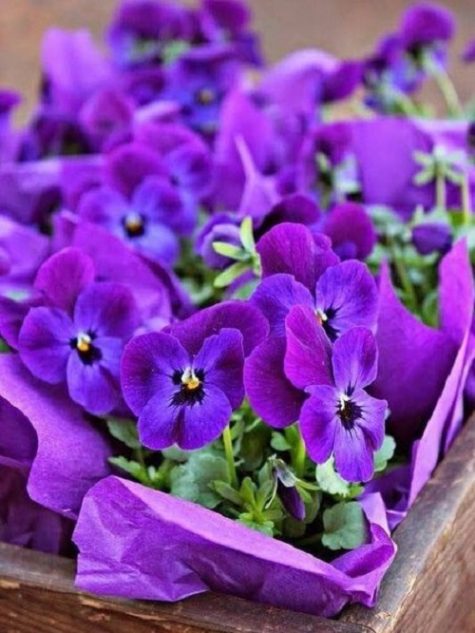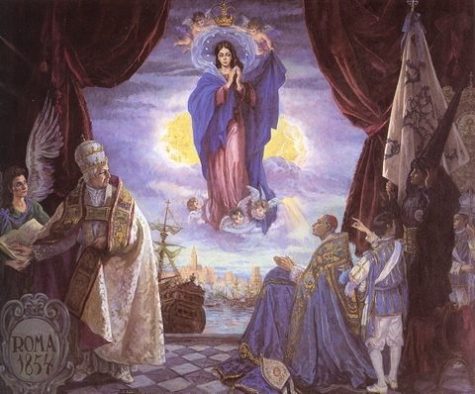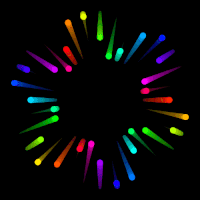Violet – In Depth
The learned compute that seven hundred and seven millions of millions of vibrations have penetrated the eye before the eye can distinguish the tints of a violet. ~Lytton
The word violet is from the Middle English and old French violette, and from the Latin viola, the names of the violet flower. The first recorded use of violet as a color name in English was in 1370.
Violet can also refer to the first violas which were originally painted a similar color.
In Arabic language Violet color is called Nile and the dye Nilege made from Viola flower (of the violet color) which was dominant on the shores of the Nile River, giving the Nile color as the name of the Nile river. The Violet shade of Blue is called Nili in Contemporary Arabic.
In Chinese painting, the color violet represents the harmony of the universe because it is a combination of red and blue (Yin and yang respectively). In Hinduism and Buddhism violet is associated with the Crown Chakra.
Violet is one of the oldest colors used by man. Traces of very dark violet, made by grinding the mineral manganese, mixed with water or animal fat and then brushed on the cave wall or applied with the fingers, are found in the prehistoric cave art in Pech Merle, in France, dating back about twenty-five thousand years.
More recently, the earliest dates on cave paintings have been pushed back farther than 35,000 years. Hand paintings on rock walls in Australia may be even older, dating back as far as 50,000 years.
It has also been found in the cave of Altamira and Lascaux. It was sometimes used an alternative to black charcoal. Sticks of manganese, used for drawing, have been found at sites occupied by Neanderthal man in France and Israel. From the grinding tools at various sites, it appears it may also have been used to color the body and to decorate animal skins.
Berries of the genus rubus, such as blackberries, were a common source of dyes in antiquity. The ancient Egyptians made a kind of violet dye by combining the juice of the mulberry with crushed green grapes. The Roman historian Pliny the Elder reported that the Gauls used a violet dye made from bilberry to color the clothing of slaves. These dyes faded quickly in sunlight and when washed.
During the Middle Ages violet was worn by bishops and university professors and was often used in art as the color of the robes of the Virgin Mary. Violet and purple retained their status as the color of emperors and princes of the church throughout the long rule of the Byzantine Empire.
While violet was worn less frequently by Medieval and Renaissance kings and princes, it was worn by the professors of many of Europe’s new universities. Their robes were modeled after those of the clergy, and they often square violet caps and violet robes, or black robes with violet trim.
Violet also played an important part in the religious paintings of the Renaissance. Angels and the Virgin Mary were often portrayed wearing violet robes. The 15th-century Florentine painter Cennino Cennini advised artists: “If you want to make a lovely violet colour, take fine lacca, ultramarine blue (the same amount of the one as of the other)…” For fresco painters, he advised a less-expensive version, made of a mixture of blue indigo and red hematite.
The violet or purple necktie became very popular at the end of the first decade of the 21st century, particularly among political and business leaders. It combined the assertiveness and confidence of a red necktie with the sense of peace and cooperation of a blue necktie, and it went well with the blue business suit worn by most national and corporate leaders.
Seeing Violet:
Violet is at one end of the spectrum of visible light, between blue and the invisible ultraviolet. It has the shortest wavelength of all the visible colors. Violet is a spectral, or real color – it occupies its own place at the end of the spectrum of light. Violet is the color the eye sees looking at light with a wavelength of between 380 and 450 nanometers. It was one of the colors of the spectrum first identified by Isaac Newton in 1672.
In the traditional color wheel used by painters, violet and purple lie between red and blue. Violet is inclined toward blue, while purple is inclined toward red.
Symbolic meanings of violet:
- Knowledge and intelligence
- Piety
- Sobriety
- Humility
- Temperance
- Peace
- Spirituality
 Spectral Coordinates:
Spectral Coordinates:
- Wavelength: 380-450 nm
- Frequency: 800-715 THz
Color Coordinates:
- Hex triplet: #8F00FF
- sRGBB: (143, 0, 255)
- CMYKH: (44, 100, 0, 0)
- HSV: (274°, 100%, 100%)
Note: This post was compiled by Shirley Twofeathers for Color Therapy, you may repost and share without karmic repercussions, but only if you give me credit and a link back to this website. Blessed be.




Leave a Reply